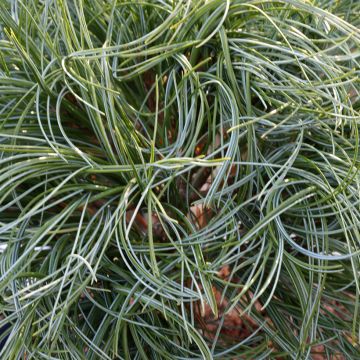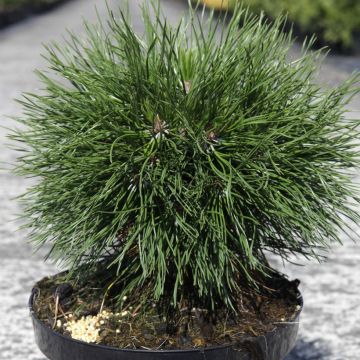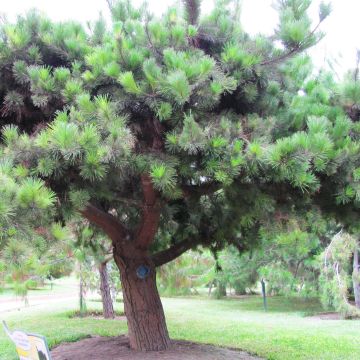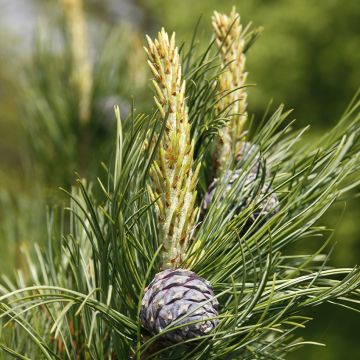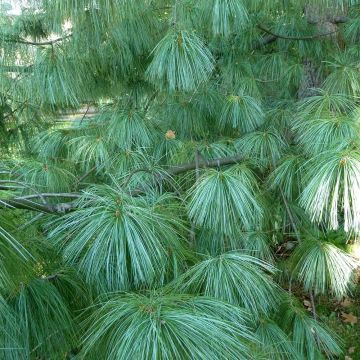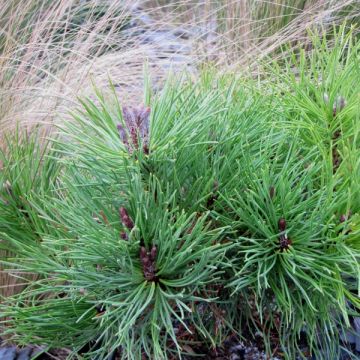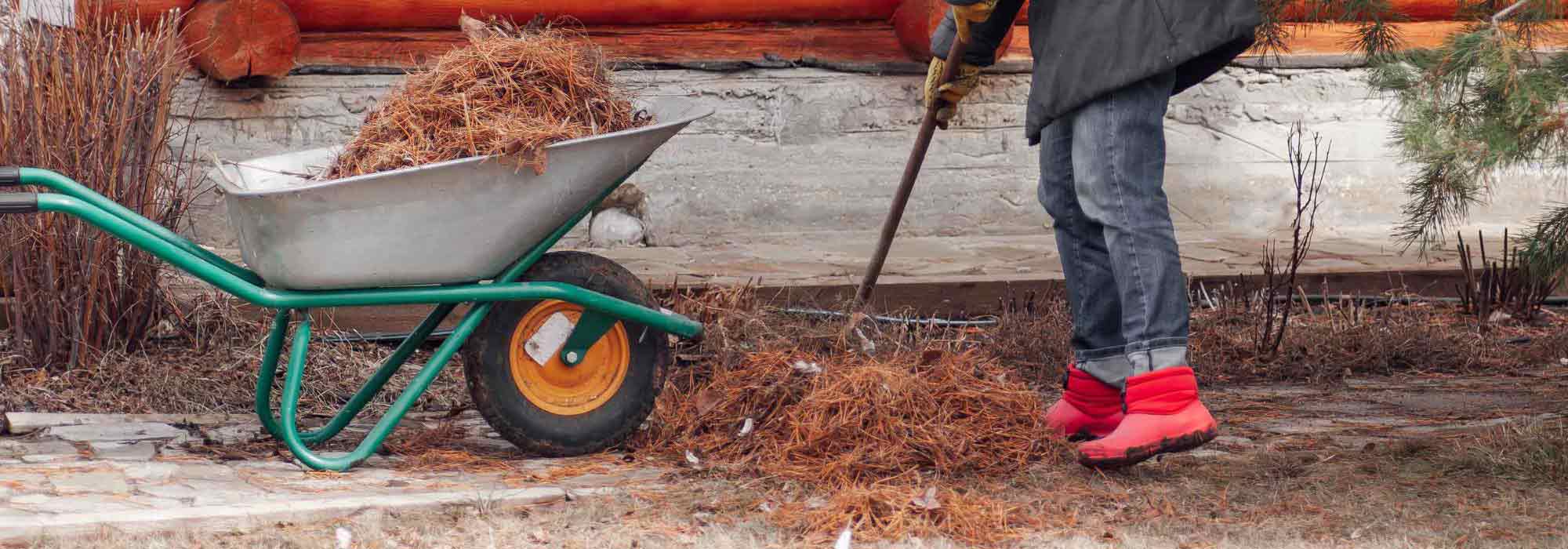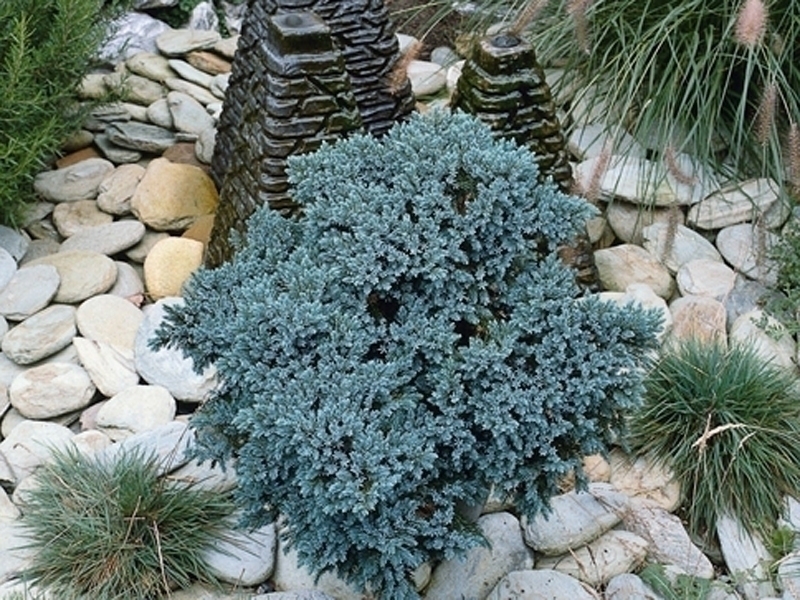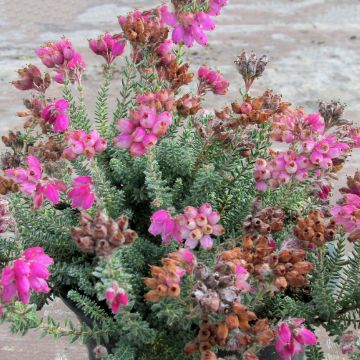

Pin sylvestre nain - Pinus sylvestris Chantry Blue
Pinus sylvestris Chantry Blue - Scots Pine
Pinus sylvestris Chantry Blue
Scots Pine
Special offer!
Receive a €20 voucher for any order over €90 (excluding delivery costs, credit notes, and plastic-free options)!
1- Add your favorite plants to your cart.
2- Once you have reached €90, confirm your order (you can even choose the delivery date!).
3- As soon as your order is shipped, you will receive an email containing your voucher code, valid for 3 months (90 days).
Your voucher is unique and can only be used once, for any order with a minimum value of €20, excluding delivery costs.
Can be combined with other current offers, non-divisible and non-refundable.
Why not try an alternative variety in stock?
View all →This plant carries a 24 months recovery warranty
More information
We guarantee the quality of our plants for a full growing cycle, and will replace at our expense any plant that fails to recover under normal climatic and planting conditions.
Would this plant suit my garden?
Set up your Plantfit profile →
Description
Pinus sylvestris 'Chantry Blue' is a compact form of the Scots Pine, which combines a natural irregular habit with a distinctly blue foliage. Its slow growth and reduced size make it suitable for any garden, even small ones. Ideal for rockeries or borders, it can also be grown in containers on a terrace. This easy-going variety is exceptionally hardy, growing in most well-drained soils and showing resistance to drought once established. This small conifer thrives in full sun or partial shade.
Pinus sylvestris, commonly known as the Scots Pine, is a coniferous tree belonging to the Pinaceae family and widely distributed throughout northern Europe and Asia Minor. It is a light-demanding species adapted to drought and extreme cold, tolerating poor soils. This tree can reach heights of 30m (98ft) or more in its natural habitat and typically has a rounded crown on a trunk with reddish-brown or vermilion bark. However, its habit can vary depending on its environment.
'Chantry Blue' is a witch's broom Scots Pine discovered in 1972 in County Surrey (south of London), within a preserved site of over 350 ha called Horsell Common. Witch's brooms are mutations or diseases caused by fungi or bacteria, resulting in abnormally dense branching. They can be encountered quite frequently in nature or even in urban plantations. Several of them have been selected by nurserymen for their ornamental value and have given rise to new horticultural varieties.
Discovered by a certain B. Reynolds, the witch's broom 'Chantry Blue' was introduced to the market by Don Hatch of Chantry Nurseries in Devon (southwest England).
Growing slowly, this pine will reach a height of 1.50m (5ft) to 1.80m (6ft) after 10 years of cultivation with a width of 1m (3ft) to 1.50m (5ft). Its habit is generally irregular and bushy, becoming more globular in its juvenile phase. It forms numerous branches of different sizes, adorned with pleasantly peeling reddish-brown bark. The needles, inserted in pairs and quite dense, give it a slightly tousled and highly ornamental appearance. Measuring up to 6-8cm (2-3in) in length, the slightly undulate needles have a beautiful blue colour, albeit with varying intensity throughout the seasons. It is these needles that give this conifer its decorative value, as the cones are relatively inconspicuous, both in size (about 5cm (2in)) and colour (grey to reddish-brown).
Extremely hardy (-40°C), this Scots Pine can be planted even at high altitudes. It tolerates most soils, from acidic to moderately limey, even poor or sandy soils, provided they are well-drained.
Pinus sylvestris 'Chantry Blue' is an excellent choice for small gardens, where it can be planted in borders, rockeries, or even in containers to embellish a terrace. It can be paired with other colourful foliage plants to create striking contrasts. Picea glauca 'Daisy's White', or White Spruce, produces young shoots that are white to pale yellow in spring, creating a beautiful contrast with the blue of the Scots Pine. Among deciduous plants, Cotinus coggygria 'Lilla', a dwarf smokebush with purple foliage, will also make a perfect companion. Its airy flowering and magnificent autumn colours will bring dynamism to your border. Another showy shrub, Physocarpus opulifolius 'Magic Ball', captivates with its ever-changing foliage colours, starting with orange hues, turning to golden yellow in summer, and finally to red in autumn. Its pale pink flowers in June will further enhance the scene you have created.
Plant habit
Foliage
Botanical data
Pinus
sylvestris
Chantry Blue
Pinaceae
Scots Pine
Cultivar or hybrid
Other Pinus - Pine
View all →Planting and care
Pinus sylvestris 'Chantry Blue' is planted from September to November and from February to June, in light, well-drained soil, close to neutrality, even poor and dry in summer. It prefers loose and light, sandy or loamy soils, with little limestone. Choose a sunny or semi-shaded and well-cleared location. Soak the roots well before planting. Add organic amendment at planting and water generously for the first three years, and in case of prolonged drought. In very poor soil, you can apply a special conifer fertilizer every 2 years, in April. Hoe the soil in summer. This very hardy conifer (up to -40°C (1°F) at least) fears waterlogged, heavy and compact soils, and overly alkaline soils. Pruning is not necessary.
Planting period
Intended location
Care
Planting & care advice
This item has not been reviewed yet - be the first to leave a review about it.
Similar products
Haven't found what you were looking for?
Hardiness is the lowest winter temperature a plant can endure without suffering serious damage or even dying. However, hardiness is affected by location (a sheltered area, such as a patio), protection (winter cover) and soil type (hardiness is improved by well-drained soil).

Photo Sharing Terms & Conditions
In order to encourage gardeners to interact and share their experiences, Promesse de fleurs offers various media enabling content to be uploaded onto its Site - in particular via the ‘Photo sharing’ module.
The User agrees to refrain from:
- Posting any content that is illegal, prejudicial, insulting, racist, inciteful to hatred, revisionist, contrary to public decency, that infringes on privacy or on the privacy rights of third parties, in particular the publicity rights of persons and goods, intellectual property rights, or the right to privacy.
- Submitting content on behalf of a third party;
- Impersonate the identity of a third party and/or publish any personal information about a third party;
In general, the User undertakes to refrain from any unethical behaviour.
All Content (in particular text, comments, files, images, photos, videos, creative works, etc.), which may be subject to property or intellectual property rights, image or other private rights, shall remain the property of the User, subject to the limited rights granted by the terms of the licence granted by Promesse de fleurs as stated below. Users are at liberty to publish or not to publish such Content on the Site, notably via the ‘Photo Sharing’ facility, and accept that this Content shall be made public and freely accessible, notably on the Internet.
Users further acknowledge, undertake to have ,and guarantee that they hold all necessary rights and permissions to publish such material on the Site, in particular with regard to the legislation in force pertaining to any privacy, property, intellectual property, image, or contractual rights, or rights of any other nature. By publishing such Content on the Site, Users acknowledge accepting full liability as publishers of the Content within the meaning of the law, and grant Promesse de fleurs, free of charge, an inclusive, worldwide licence for the said Content for the entire duration of its publication, including all reproduction, representation, up/downloading, displaying, performing, transmission, and storage rights.
Users also grant permission for their name to be linked to the Content and accept that this link may not always be made available.
By engaging in posting material, Users consent to their Content becoming automatically accessible on the Internet, in particular on other sites and/or blogs and/or web pages of the Promesse de fleurs site, including in particular social pages and the Promesse de fleurs catalogue.
Users may secure the removal of entrusted content free of charge by issuing a simple request via our contact form.
The flowering period indicated on our website applies to countries and regions located in USDA zone 8 (France, the United Kingdom, Ireland, the Netherlands, etc.)
It will vary according to where you live:
- In zones 9 to 10 (Italy, Spain, Greece, etc.), flowering will occur about 2 to 4 weeks earlier.
- In zones 6 to 7 (Germany, Poland, Slovenia, and lower mountainous regions), flowering will be delayed by 2 to 3 weeks.
- In zone 5 (Central Europe, Scandinavia), blooming will be delayed by 3 to 5 weeks.
In temperate climates, pruning of spring-flowering shrubs (forsythia, spireas, etc.) should be done just after flowering.
Pruning of summer-flowering shrubs (Indian Lilac, Perovskia, etc.) can be done in winter or spring.
In cold regions as well as with frost-sensitive plants, avoid pruning too early when severe frosts may still occur.
The planting period indicated on our website applies to countries and regions located in USDA zone 8 (France, United Kingdom, Ireland, Netherlands).
It will vary according to where you live:
- In Mediterranean zones (Marseille, Madrid, Milan, etc.), autumn and winter are the best planting periods.
- In continental zones (Strasbourg, Munich, Vienna, etc.), delay planting by 2 to 3 weeks in spring and bring it forward by 2 to 4 weeks in autumn.
- In mountainous regions (the Alps, Pyrenees, Carpathians, etc.), it is best to plant in late spring (May-June) or late summer (August-September).
The harvesting period indicated on our website applies to countries and regions in USDA zone 8 (France, England, Ireland, the Netherlands).
In colder areas (Scandinavia, Poland, Austria...) fruit and vegetable harvests are likely to be delayed by 3-4 weeks.
In warmer areas (Italy, Spain, Greece, etc.), harvesting will probably take place earlier, depending on weather conditions.
The sowing periods indicated on our website apply to countries and regions within USDA Zone 8 (France, UK, Ireland, Netherlands).
In colder areas (Scandinavia, Poland, Austria...), delay any outdoor sowing by 3-4 weeks, or sow under glass.
In warmer climes (Italy, Spain, Greece, etc.), bring outdoor sowing forward by a few weeks.
































